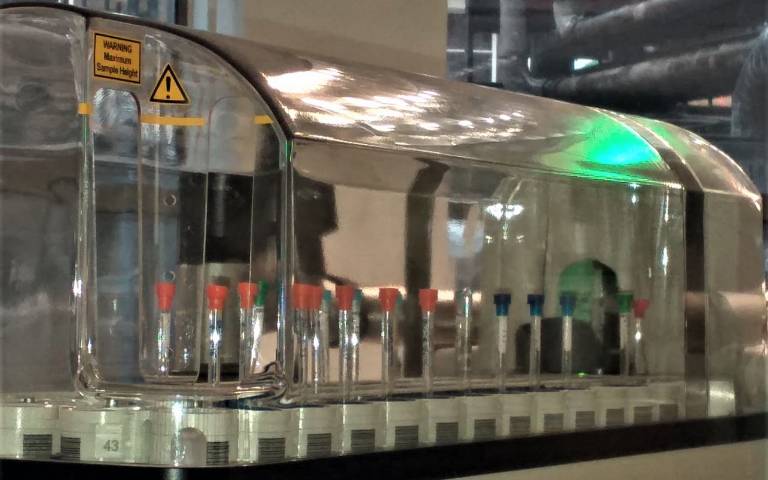Chemistry technique can be used to study degradation of plastic used in art works more efficiently
4 December 2020
Researchers at UCL Institute for Sustainable Heritage, Department of Chemistry, and SEAHA students explore Nuclear magnetic resonance (NMR) spectroscopy as novel method of studying degradation of cellulose acetate

Since the early twentieth century artists have been using cellulose acetate, a semi-synthetic plastic, for artworks which are now stored in museum collections and archives. These pieces are challenging for conservators because of stability issues associated with their degradation. Cellulose acetate objects lose both structural integrity and their aesthetic value by the loss of plasticisers, and associated warping, crazing, cracking and brittleness, and also by deacetylation which is associated with the formation of acetic acid and the subsequent characteristic vinegar smell.
Until now, current methods used to study this degradation have had long analysis times (days) and involved multiple extraction cycles. Using a technique often used in chemistry, nuclear magnetic resonance (NMR) spectroscopy, this research provides a more efficient way of studying cellulose acetate. The technique has been underused in the heritage field, especially for polymeric art.
Using NMR spectroscopy, researchers were able to quantify diethyl phthalate and degree of substitution values in plasticised historic cellulose materials. This methodology allows for analysis without needing to separate the plasticiser and cellulose acetate polymer matrix before analysis as in previous analysis used on these objects.
As such, the use of this technique applied in a novel way sheds light on the deterioration of cellulose acetate objects in a far more efficient manner, and was proved to be particularly suitable to analyse historic plastic materials. It can therefore contribute to ongoing efforts to investigate the impact of environmental storage conditions on the rate of these degradation processes.
The research was carried out as part of COMPLEX, an European Research Council funded project at UCL Institute Sustainable Heritage which explore plastic objects in their environment as complex systems. It was led by Simoní da Ros, co-authored by SEAHA students Isabella del Gaudio, Rose King, Anna Pokorska, and Mark Kearney, and also received contribution from Dr Katherine Curran at UCL ISH and Dr Abil Aliev at UCL Department of Chemistry.
Links
- Read Characterising plasticised cellulose acetate-based historic artefacts by NMR spectroscopy: a new approach for quantifying the degree of substitution and diethyl phthalate contents in Polymer Degradation and Stability
- Simoní da Ros, UCL profile
- COMPLEX project (follow on twitter)
- SEAHA student profiles
Image: Simoní da Ros
 Close
Close

